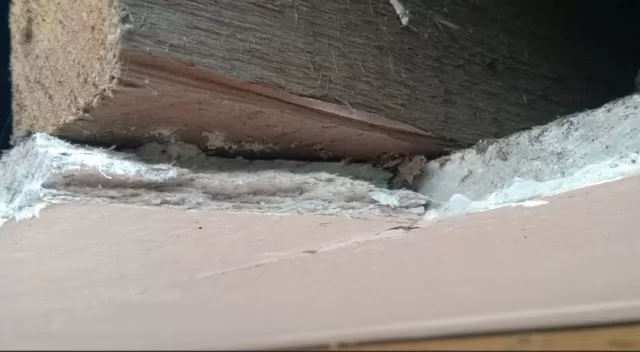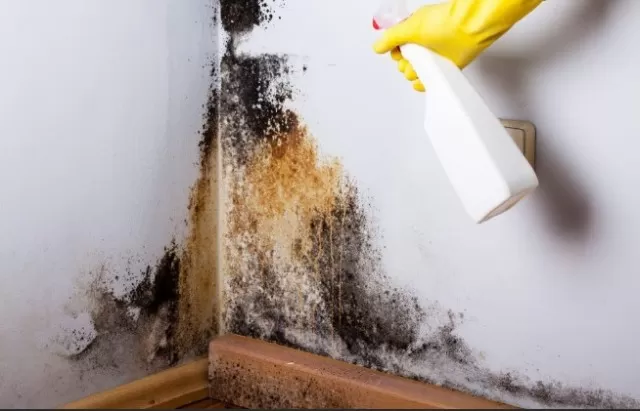Home Health Hazards: Is Your House Harming You?Our homes have long been revered as sanctuaries, providing solace and protection from the uncertainties that abound in the outside world.
Yet, despite our best efforts to create safe and secure living spaces, hidden perils can insidiously infiltrate our homes. Astonishingly, the U.S. Environmental Protection Agency estimates that up to 6 out of 10 homes and buildings harbor hazards that endanger human health. Moreover, the staggering reality is that we spend approximately 90 percent of our time indoors, where air pollution levels typically surpass those found outdoors by two to five times, as reported by the Greenguard Environmental Institute.
A Key contributor to poor indoor Air Quality lies within our very furnishings and building materials. These seemingly innocuous components release a multitude of volatile organic compounds (VOCs) into the air we breathe. Recognizing that prevention is the first step toward a cure, it becomes imperative to shed light on common sources of indoor health hazards and offer practical alternatives that can diminish our families’ exposure to household toxins.
By understanding and addressing the sources of indoor air pollution, we can foster a healthier environment within our homes. The journey towards a toxin-free haven involves making informed choices about the materials we bring into our living spaces, from furniture to flooring, paints to cleaning products. Opting for low-VOC or VOC-free alternatives, investing in air purifiers, and ensuring proper ventilation are just a few steps we can take to safeguard our loved ones from the hidden health hazards that lurk within our own walls.
By shedding light on these issues and making conscious decisions, we can transform our homes into true sanctuaries—spaces where we can thrive and flourish, free from the burden of harmful toxins that compromise our well-being.
The Lingering Threat of Asbestos: Unveiling the Hidden Dangers Lurking in Our Homes

Once regarded as a ubiquitous construction staple, asbestos has left an indelible mark on countless older homes, concealing itself within the very fabric of their structures.
Its pervasive presence, often concealed in shingles, ceiling tiles, and flooring, poses a latent danger to unsuspecting inhabitants. Composed of minuscule fibers, this resilient and fire-resistant material possesses a sinister potential.
When disturbed, these airborne fibers can infiltrate our lungs, instigating a myriad of severe health complications. However, by seeking professional expertise in the form of asbestos testing and removal, we can shield ourselves from the pernicious consequences this substance inflicts.
Asbestos, once celebrated for its versatility and exceptional fire-resistant properties, was widely employed as a building material in the past.
Many homes constructed before the 1980s harbor this now-infamous substance, posing a potential health hazard to occupants. Its presence in various elements of residential structures, such as shingles, ceiling tiles, and flooring, presents an insidious threat that often goes undetected.
What makes asbestos particularly treacherous is its composition of microscopic fibers.
When these fibers are disturbed, either through.
The Hidden Peril of Lead: Safeguarding Homes and Protecting Our Children
Among the array of hazards that plague older homes, lead stands out as a pervasive and insidious contaminant.
This toxic metal, once prevalent in paints, continues to haunt us, posing a significant threat to the well-being of our children. In their innocent exploration of their surroundings, they may inadvertently ingest chips of flaking paint or inhale dust from window frames and door moldings, exposing themselves to the perils of lead poisoning. The consequences of such exposure can be severe, ranging from developmental delays and learning disabilities to profound damage to the delicate nervous system. To ensure a safe haven for our loved ones, it is crucial to eradicate lead contamination from our homes and conscientiously opt for materials that are free of this toxic substance.
Lead, a hazardous metal once commonly used in residential paints, continues to cast a shadow of concern over older homes.
Particularly concerning is the threat it poses to children, who are vulnerable to its insidious effects. In their everyday activities and explorations, young ones may unwittingly come into contact with deteriorating paint chips or breathe in dust particles from window frames and door moldings, inadvertently introducing toxic lead into their systems.
The repercussions of lead poisoning are far-reaching, encompassing developmental delays, learning disabilities, and grave harm to the delicate nervous system.
To ensure the safety and well-being of our children, it is paramount to take decisive action in eliminating lead contamination from our homes.
Implementing rigorous testing and remediation measures can mitigate the risks associated with this harmful metal. Moreover, a proactive approach to future home improvements and renovations should involve the careful selection of lead-free materials, ensuring a healthier living environment for generations to come.
Revolutionizing Paint: Navigating the Era of VOCs and Embracing Safer Options

In the realm of modern paint, the specter of lead may have been vanquished, but a new concern has emerged in the form of volatile organic compounds (VOCs).
While these compounds are absent in today’s paint formulations, they can still be found in trace amounts and have the potential to off-gas, causing irritation to our sensory organs. Notably, the fumes emitted by oil-based paints tend to be the most notorious offenders, rendering them more suitable for outdoor projects or limited indoor applications that prioritize their durable and lustrous finish.
On the other hand, latex paints, which generate fewer odors, have become the preferred choice for interior painting endeavors.
Acknowledging the health risks associated with VOCs, numerous companies have responded by introducing low-VOC paint options into the market.
These innovative formulations minimize the presence of toxic fumes, allowing homeowners and professionals alike to embrace a more environmentally conscious and health-conscious approach to painting.
The landscape of paint has undergone significant transformation in recent years, with lead becoming a relic of the past.
However, a new concern has emerged—volatile organic compounds (VOCs)—as the focus shifted towards improving indoor air quality and reducing potential health risks. While the levels of VOCs in modern paints have significantly decreased, they still possess the ability to off-gas, releasing irritating substances that can affect the eyes, nose, and throat.
Oil-based paints, known for their robust and glossy finish, tend to emit the most potent fumes among different paint types.
Consequently, they are typically reserved for outdoor projects or utilized sparingly in small-scale indoor applications. In contrast, latex paints have gained popularity for interior use due to their lower odor levels and ease of application.
Recognizing the need for safer alternatives, many paint manufacturers have responded by developing low-VOC or even VOC-free paint options.
These eco-friendly formulations minimize the release of harmful fumes, providing homeowners and professionals with an opportunity to create beautiful spaces while prioritizing their health and the well-being of the environment. By opting for these innovative paint products, individuals can mitigate the potential risks associated with VOC exposure and contribute to a healthier living environment.
Navigating Safer Cleanup: Embracing Environmentally-Friendly Solvents in the Wake of Painting Projects
The aftermath of a painting endeavor often entails meticulous cleanup, which, unfortunately, can expose individuals to harmful volatile organic compounds (VOCs) that can lead to unpleasant symptoms such as headaches and dizziness.
Paint thinners and various solvents commonly used for cleaning purposes tend to harbor high levels of VOCs, permeating indoor air and impregnating furnishings with potentially detrimental effects. However, a ray of hope shines through the availability of numerous “green” solvents in the market, purposefully crafted to tackle the removal of paint, grease, and oil without causing any harmful side effects.
Completing a painting project comes hand in hand with the responsibility of thorough cleanup, a process that can unwittingly expose individuals to the hazards of volatile organic compounds (VOCs).
These chemical compounds, prevalent in paint thinners and other solvents used for cleaning purposes, have the potential to infiltrate indoor air and seep into furnishings, giving rise to undesirable symptoms such as headaches and dizziness.
Paint thinners, in particular, often contain high levels of VOCs, making them a significant source of indoor air pollution during cleanup activities.
The off-gassing of these compounds can persist long after the painting project is completed, posing a potential threat to the well-being of inhabitants. To address this concern, the market now offers a range of “green” solvents explicitly designed to eliminate paint, grease, and oil without compromising the health and safety of individuals.
These environmentally-friendly solvents present a viable alternative, minimizing the release of harmful VOCs into the air and promoting a healthier living environment.
By opting for these “green” options, individuals can mitigate the risks associated with VOC exposure while effectively tackling the cleanup process after painting projects. It is essential to prioritize the use of such solvents to safeguard both personal health and the overall well-being of our living spaces.
Confronting the Menace of Mold: Unveiling the Hidden Health Hazards and Embracing Effective Prevention Measures

Within the confines of our homes, a silent intruder often lurks, posing a significant threat to our well-being—mold.
This insidious living organism thrives in damp environments, finding solace in areas such as basements, carpeting, the spaces beneath sinks, and even within wall and ceiling insulation. As mold propagates, it releases airborne spores that can trigger allergic reactions, respiratory issues, and skin problems in unsuspecting individuals.
The pivotal step in safeguarding our homes and loved ones lies in the eradication of any damp conditions that foster mold growth.
Mold, a common household enemy, is responsible for a multitude of illnesses that plague individuals within their own abodes.
Flourishing in damp environments, this resilient organism finds refuge in various corners of our homes, including basements, carpeted areas, the often-neglected spaces under sinks, and even within the concealed confines of wall and ceiling insulation. Its presence poses a hidden danger, as it releases microscopic spores into the air, leading to a range of health issues.
Airborne mold spores can trigger allergic reactions, respiratory problems, and skin irritations in susceptible individuals.
The symptoms can range from mild discomfort, such as sneezing and coughing, to more severe manifestations like asthma attacks or allergic rhinitis. Prolonged exposure to mold can exacerbate existing respiratory conditions or even contribute to the development of new ones.
To combat the menace of mold, prevention is key.
Eliminating damp conditions in our homes becomes paramount in mitigating its growth. Addressing issues such as leaks, moisture accumulation, or inadequate ventilation is essential to creating an environment that discourages mold proliferation.
Additionally, promptly addressing any signs of water damage, promptly drying affected areas, and investing in proper insulation and humidity control measures can significantly reduce the risk of mold infestation.
By embracing a proactive approach to mold prevention, we can protect our homes and loved ones from the hidden health hazards posed by this seemingly inconspicuous organism.
Regular maintenance, prompt remediation of moisture-related issues, and ensuring proper ventilation and humidity control create a healthier living environment, free from the perils of mold-related illnesses.
*The information is for reference only.